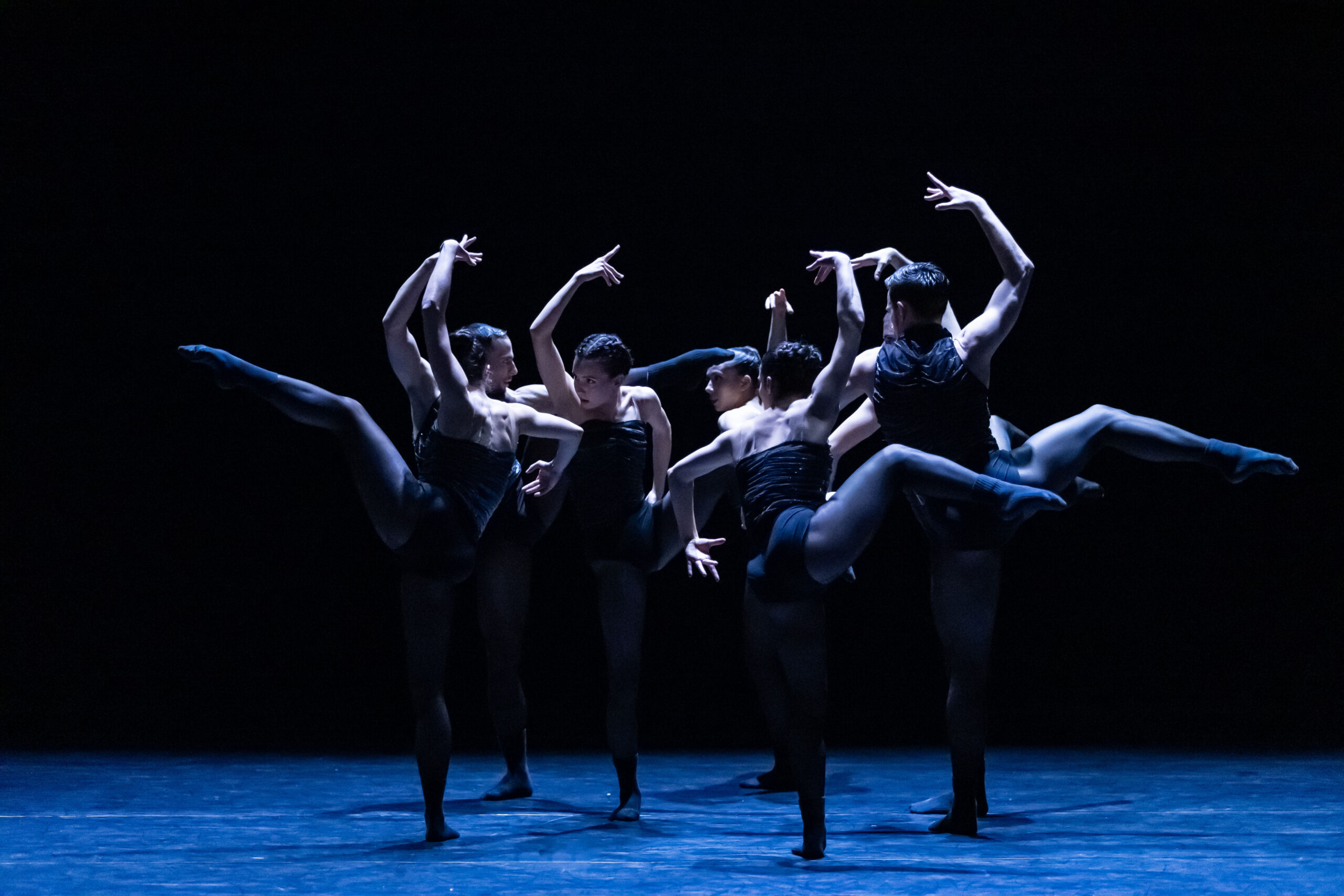As the curtain rises, the stage is already alive with raw energy. Twenty dancers at full throttle power Omniforge, a machine fueled by sheer force. Occasionally, energy dips, cutting to darkness, moments of blackout, before the stage bursts back into light. Parts of the dancers’ skin glow under the spotlight, while large areas are clad in tight costumes that resemble black textured skin, like animal hide. The energy pulls the dancers together; arms and legs jut out into space like a mythical scorpion flaunting its deadly sting. As the main energy fades, limbs draw back toward the torso, while a wave-like movement continues flowing within their bodies.
Omniforge is a composition that stands out in all its splendor, evokes the aesthetic of an apocalypse machine, a post-human dance, a celebration of the body transformed into that very machine. The solo by the remarkable Nora Segalla offers a glimpse into the movement language of the lone individual, briefly shifting focus from the overwhelming force of the collective “we.” I can’t recall seeing dancers with such total commitment, virtuosity, and precision.
At first glance, Kosmos by Andonis, the second piece in the program, mirrors Godani’s work with its relentless, pounding motion throughout. I wondered about the pairing, since programs usually aim for variety, but a closer look reveals their differences. While Omniforge is post-humanity, Kosmos still features people dancing in blue outfits, suits that could belong in a cultural center where, unwillingly, they find themselves trapped in a chaotic world. Their movement is angry, striking, whipping, washing over the stage. The choreography seems to spring from an endless well of creativity, brought to life by the exceptional dancers, notably Giorgia Scocchera. Throughout the piece, there’s a sense of urgency, time running out, and when the battle for humanity ends in defeat, the survivors transition into a spiritual phase, shedding materiality and seeking purification (I won’t spoil the brilliant conclusion).
So what remains? Only the love between man and woman, and perhaps their connection, a new cycle for future generations who will wrestle with the question: where are we headed in today’s world? Is there any force capable of halting destruction? Or maybe all this is just imagination, because ultimately, the true uniqueness of these two works lies in their movement vocabulary and the technical challenge they pose to the dancers, providing a platform for a breathtaking performance.

